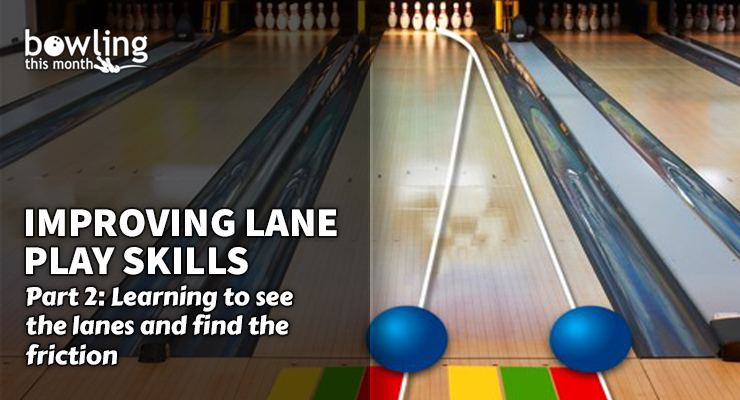Ball motion. It used to be skid, roll, and hook. Now it’s skid, hook, and then roll. The reality is actually more complicated, but these three phases of ball motion serve as the basis for understanding what your ball is doing as it goes down the lane. If you want to understand lane play and make better decisions, you need to be able to see what’s happening, and then use the appropriate skills to adapt to the lanes.
In the first part of this series, we discussed the different skills a bowler can use to adapt to the lanes. This time, we’ll discuss how to train your “vision” of the lanes to key in on what to look for and what it means. Then we’ll discuss the basic principles of good ball motion, what you are trying to find out on the lanes, and the differences between higher and lower rev rate players.
Ready to begin? Let’s talk about what you need to be able to see if you want to be better at lane play.
Improving your vision
Training yourself to see ball motion involves many different aspects that all occur in the span of a few seconds while the ball is out on the lane. From identifying your breakpoint, to where and when the ball rolls, to when it starts to hook, there’s a lot to look out for.
When it comes to observing ball motion, not all bowlers are created equal. A simple guideline is that the higher the rev rate, the more visible the different ball motion aspects are. But they also happen more quickly. With lower rev rates, things are more subtle, but they happen a bit slower.
It also depends on the ball itself. When learning to see ball motion, it’s usually better to use a more aggressive ball with bright colors because it shows the different aspects of ball motion more clearly. For example, the aggressive and brightly-colored Roto Grip Gem is a better option than the weaker, ...
This article is only available to Bowling This Month subscribers. Click below to get instant access to this article and all of our other premium instructional content.
Subscribe to Bowling This Month
Already a Bowling This Month subscriber? Click here to log in.
